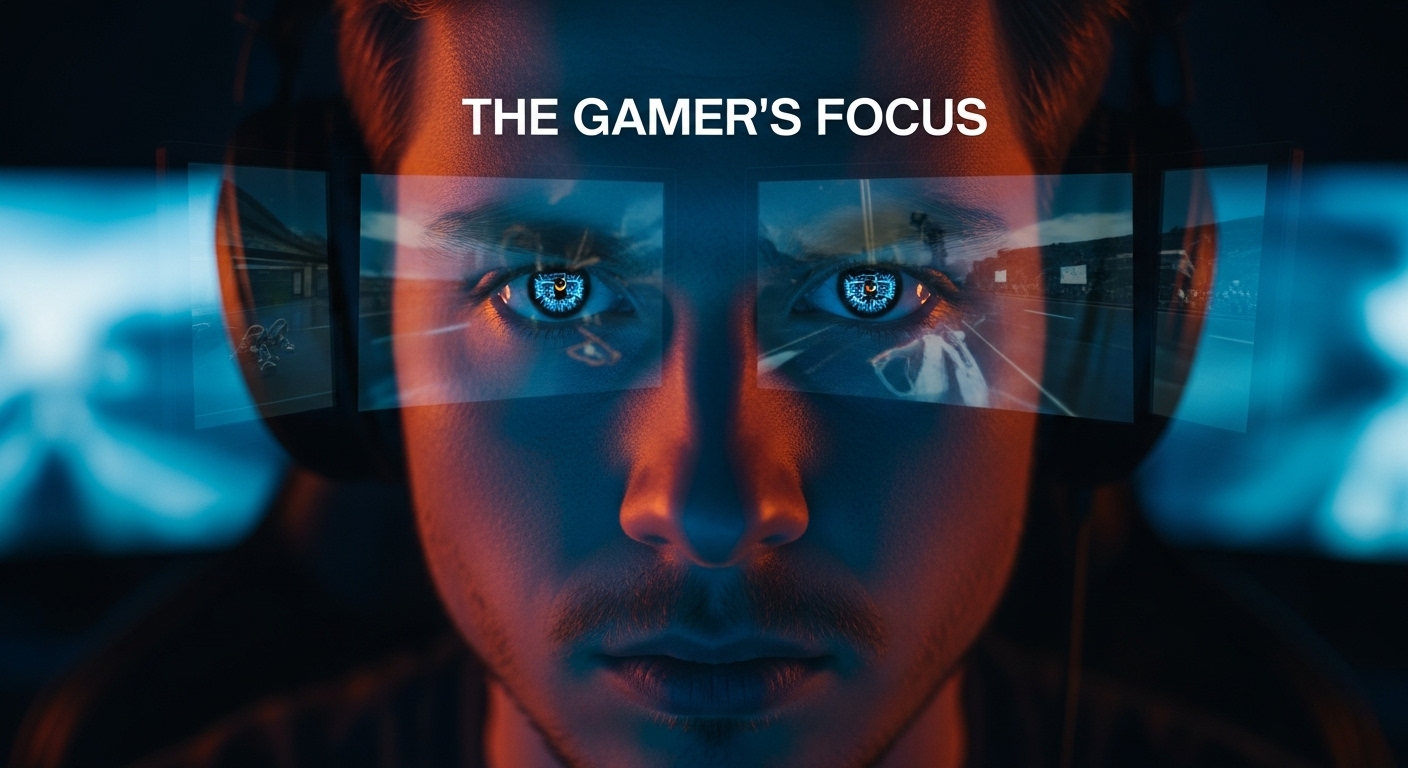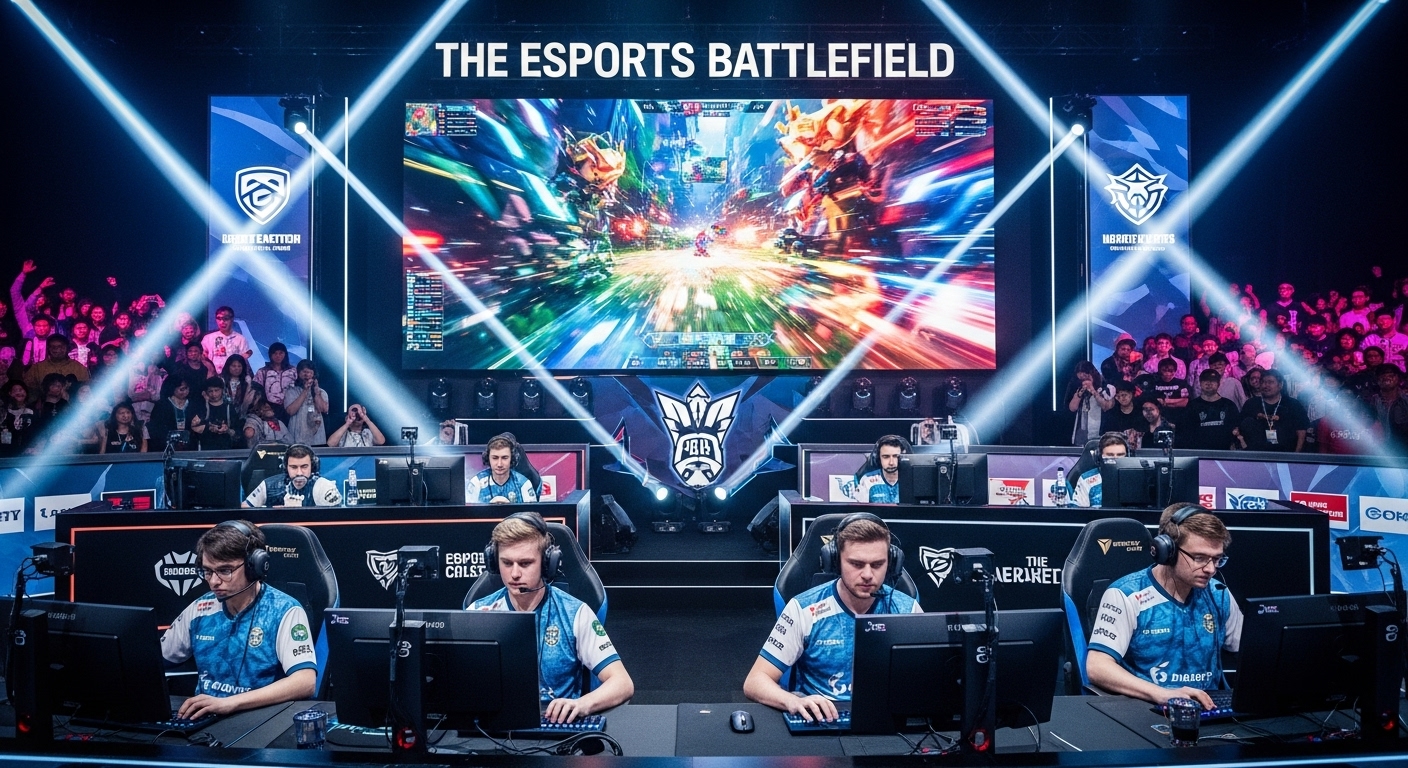Introduction
Over the past two decades, the world has witnessed an extraordinary transformation in how people play, watch, and even define sports. Once considered a niche hobby confined to bedrooms and local gaming cafés, esports — short for electronic sports — has exploded into a global industry worth billions of dollars. Today, professional gamers fill arenas, millions of fans tune in online, and major brands invest heavily in sponsorships. Esports is no longer just a pastime; it’s a cultural and economic force shaping entertainment, technology, and the future of competition.
The Early Days of Competitive Gaming
The roots of esports trace back further than most realize. Competitive gaming began long before the internet became mainstream. In the early 1970s, students at Stanford University competed in a game called “Spacewar!” which marked one of the first recorded gaming tournaments. The winner received a year’s subscription to Rolling Stone magazine — a small prize compared to today’s multimillion-dollar rewards, but an early sign of what was to come. By the 1980s, arcade gaming was thriving. Players chased high scores on classics like Pac-Man and Donkey Kong, while gaming magazines and early television programs began recognizing the best performers. This decade also introduced the idea of video games as spectator entertainment, though on a much smaller scale than today.
The Rise of Online Play and LAN Competitions
The 1990s marked a defining moment for competitive gaming. The introduction of personal computers and the internet changed how games were played and shared. Titles like Doom, Quake, and StarCraft laid the groundwork for online multiplayer gaming and created the first serious competitive communities. LAN (Local Area Network) parties became popular, where players would gather with their computers to compete in fast-paced, real-time matches. These grassroots tournaments gave rise to professional players and teams, many of whom would go on to define the esports scene in the years ahead.
The 2000s: Building the Foundation of Modern Esports
The early 2000s can be considered the formative years of modern esports. South Korea was among the first nations to treat gaming as a legitimate sport. Television networks there broadcasted live matches of StarCraft, creating celebrities out of players like Lim “BoxeR” Yo-hwan. The country’s strong broadband infrastructure and cultural embrace of gaming allowed esports to flourish faster than anywhere else. Meanwhile, in North America and Europe, competitive gaming was gaining momentum through games like Counter-Strike, Warcraft III, and Halo. Organizations such as the World Cyber Games and Major League Gaming (MLG) helped formalize tournaments with standardized rules, prize pools, and media coverage. These years were crucial for legitimizing esports as something more than casual play — it became a structured, career-oriented pursuit.
Streaming: The Turning Point for Esports
No single development transformed esports more dramatically than the rise of streaming platforms. When Twitch launched in 2011, it gave gamers the ability to broadcast their gameplay live to global audiences. Suddenly, anyone with a good connection could be both a competitor and entertainer. This accessibility didn’t just grow esports viewership; it revolutionized how fans interacted with players and teams. Esports events were no longer limited to in-person audiences or cable networks. Millions could now watch tournaments online, participate in chat discussions, and even donate to their favorite players. Streaming bridged the gap between professional esports and everyday gaming culture, making it possible for the scene to reach global mainstream attention.
The Explosion of Esports Titles
As technology advanced, so did the variety of games dominating the esports landscape. Each genre brought its own community, playstyle, and identity. Real-time strategy games like StarCraft II continued to thrive, but new genres began stealing the spotlight. Multiplayer Online Battle Arenas (MOBAs) such as League of Legends and Dota 2 introduced large-scale team-based competition, where five-player squads battled for dominance in complex digital arenas. These games emphasized coordination, strategy, and split-second decision-making, drawing comparisons to traditional sports. First-person shooters like Counter-Strike: Global Offensive and Call of Duty maintained their popularity, while newer titles such as Overwatch and Valorant added fresh dynamics to the genre. Battle Royale games like Fortnite and Apex Legends brought in younger audiences and blurred the line between competitive gaming and entertainment streaming.
The Global Stage and Major Tournaments
Today, esports tournaments rival the size and production value of traditional sporting events. Major competitions like The International (Dota 2), the League of Legends World Championship, and the Fortnite World Cup attract tens of millions of viewers and offer prize pools exceeding tens of millions of dollars. The 2019 Fortnite World Cup, for instance, awarded a solo champion a staggering three million dollars — an amount that caught the attention of both gamers and mainstream media. These events are not just about gaming; they are massive productions featuring live music, high-end stage design, and storytelling that rivals televised sports. Cities around the world compete to host these tournaments, recognizing the tourism and economic benefits they bring.
The Rise of Esports Organizations
As esports evolved, so did its structure. Teams transformed from casual groups of friends into professional organizations with management, sponsorship deals, and business strategies. Organizations like Team Liquid, Cloud9, Fnatic, and T1 operate much like traditional sports clubs. They manage players, coaches, and analysts while building brand value across multiple game titles. These teams have fanbases spread across the globe, with merchandise, social media engagement, and content creation driving their success. The professionalization of esports has also led to better player contracts, regulated leagues, and structured tournaments that ensure consistency and sustainability.
Esports and the Mainstream Media
The acceptance of esports into mainstream culture has been gradual but undeniable. Once dismissed as a fringe interest, competitive gaming now regularly features on major media outlets. Networks have broadcasted tournaments on traditional television, and universities around the world have launched esports scholarships and academic programs. Even the International Olympic Committee has explored integrating esports into future events. The growing acknowledgment of gaming as a legitimate sport reflects a broader cultural shift — one that values digital skill, strategy, and teamwork just as much as physical ability.
The Economics of Esports
Behind the flashing lights and roaring crowds lies a complex and rapidly expanding economy. The esports industry generates revenue through sponsorships, advertising, merchandise, ticket sales, and media rights. Major brands — from technology companies to fashion labels — invest heavily in esports partnerships to reach younger, tech-savvy audiences. Streaming platforms like YouTube Gaming and Twitch have become crucial to revenue distribution, offering players and teams direct ways to monetize their content. However, despite its global success, the financial side of esports remains challenging. While top organizations and players earn millions, smaller teams often struggle with sustainability. The industry continues to search for models that ensure long-term profitability while maintaining fair opportunities for up-and-coming talent.
Esports as a Career Path
The dream of becoming a professional gamer has become more attainable than ever, but it’s not without challenges. Professional players dedicate countless hours to practice, often facing physical and mental strain comparable to athletes in traditional sports. Reaction time, strategic thinking, and coordination are critical, but so are endurance and discipline. Beyond competing, esports has also created a range of career opportunities — from shoutcasters and event organizers to game developers, marketers, and analysts. The growth of esports has turned gaming into a viable career field, with roles that go far beyond simply playing.
The Role of Technology in Esports Growth
Technology has always been the backbone of esports. Advancements in internet speed, gaming hardware, and software development have all contributed to the seamless global experience players and fans enjoy today. Virtual reality and augmented reality are opening new frontiers for immersive gameplay, while AI-driven analytics help teams study opponents and improve strategies. Cloud gaming is also making high-end experiences accessible to more players, removing barriers like expensive equipment. Technology not only shapes how esports is played but also how it’s consumed. From real-time data overlays on broadcasts to interactive fan experiences, the marriage of tech and entertainment continues to define the esports experience.
The Role of Community
One of the defining traits of esports is its strong, self-sustaining community. Fans are deeply engaged, not just as spectators but as participants in the culture. Online forums, social media, and streaming platforms allow fans to interact with players, teams, and other enthusiasts worldwide. Esports communities thrive on shared passion and inclusivity, often blurring national and linguistic boundaries. Grassroots tournaments, amateur leagues, and local gaming cafés play essential roles in nurturing new talent and keeping the ecosystem vibrant.
Challenges Facing the Industry
Despite its success, esports faces several challenges. Player burnout, inconsistent regulation, and issues surrounding mental health are ongoing concerns. The lack of a single governing body makes standardization difficult, leading to disparities in player treatment and competition formats across regions. Cheating, match-fixing, and integrity issues also threaten the credibility of competitions. Additionally, while esports has made progress in inclusivity, gender representation remains uneven, with women still facing barriers in competitive spaces. Addressing these challenges will be key to ensuring the industry’s long-term health and reputation.
The Cultural Impact of Esports
Esports has significantly influenced modern culture, shaping how people interact with technology and entertainment. It has redefined the meaning of fandom, community, and even celebrity. Professional gamers and streamers often have massive online followings rivaling those of movie stars or athletes. Esports has also contributed to changing attitudes toward gaming in general. Once stigmatized as an antisocial hobby, gaming is now recognized as a platform for creativity, teamwork, and skill development. Schools and universities are incorporating esports programs to engage students, promote STEM education, and foster leadership and collaboration.
The Future of Esports
The future of esports looks bright and full of possibilities. As virtual reality, artificial intelligence, and blockchain technology evolve, new forms of competition will emerge. Hybrid events that blend physical and digital elements are already gaining traction, offering fresh ways to experience gaming. Esports is expected to continue expanding into new markets, with growing popularity in regions like Africa, the Middle East, and South America. Traditional sports organizations are also deepening their involvement, creating partnerships and even acquiring esports teams. As the lines between physical and digital competition blur, esports could become the defining sport of the 21st century.
Esports and Society
Beyond entertainment, esports has the potential to impact society in meaningful ways. It promotes digital literacy, teamwork, and strategic thinking — skills increasingly relevant in today’s connected world. Moreover, esports brings people together across geographical and cultural boundaries, creating a shared global language of competition. Its rise has also influenced industries like education, technology, and marketing, showing how deeply intertwined gaming has become with everyday life. As the industry matures, it will play an even greater role in shaping social trends and technological innovation.
Conclusion
Esports has come a long way from basement LAN parties and local arcade tournaments. It has evolved into a global powerhouse that blends competition, entertainment, and culture. The passion of players and fans continues to drive its momentum, while technology keeps pushing the boundaries of what’s possible. Esports stands as proof that human competition doesn’t need to be confined to physical arenas — it can thrive in virtual ones, too. Whether you view it as a sport, an art form, or a community, one thing is clear: esports is not a passing trend. It’s a movement that will continue to shape the future of entertainment, technology, and human connection for decades to come.



